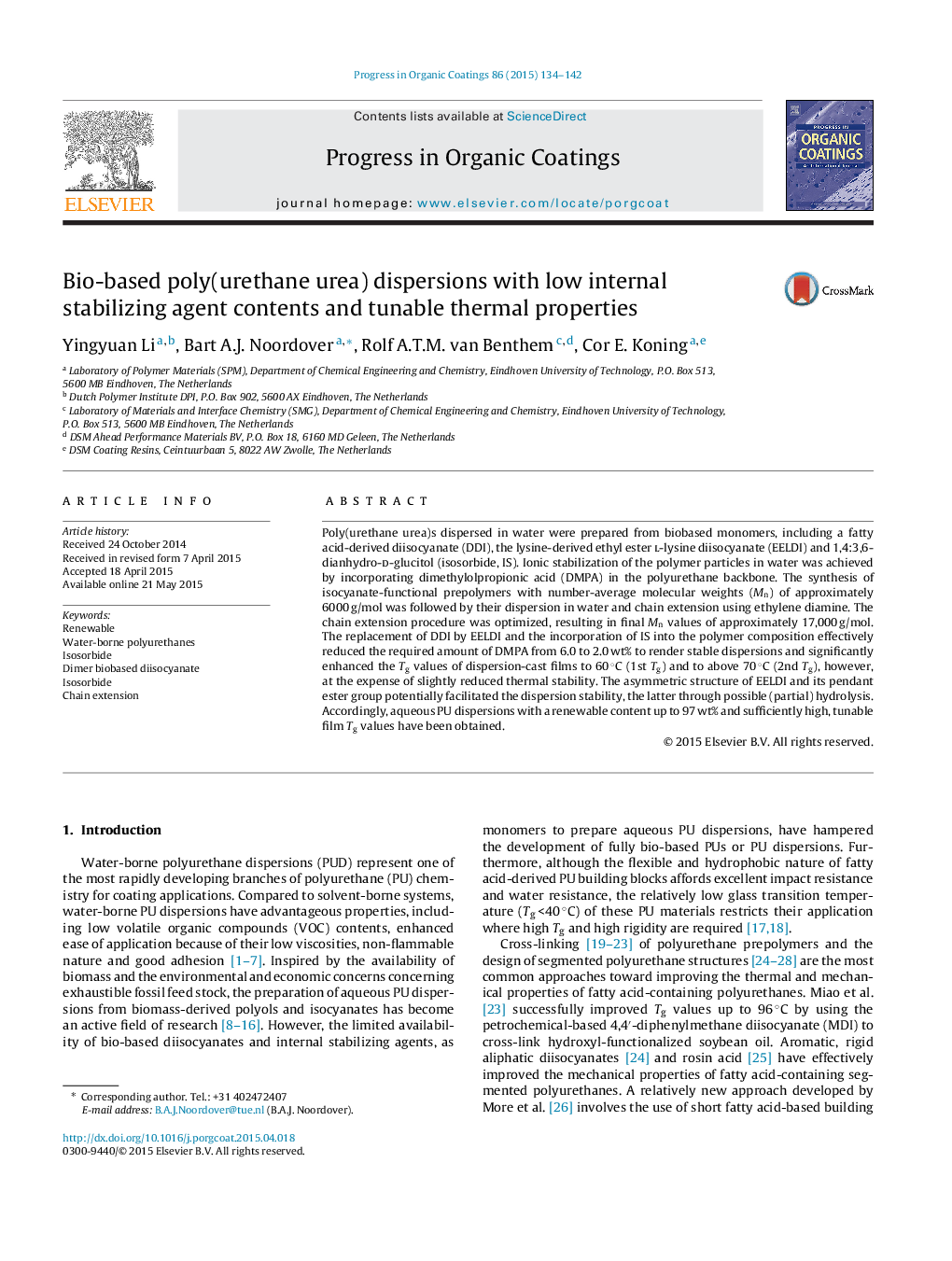| Article ID | Journal | Published Year | Pages | File Type |
|---|---|---|---|---|
| 692383 | Progress in Organic Coatings | 2015 | 9 Pages |
•EELDI in reaction with IS exhibits a comparable reactivity to HDI.•EELDI is suitable for the preparation of PU dispersions.•Stable PUDs obtained at DMPA contents as low as 2.5 wt%.•Tg values of dispersion-cast films were tunable from 28 to above 60 °C.
Poly(urethane urea)s dispersed in water were prepared from biobased monomers, including a fatty acid-derived diisocyanate (DDI), the lysine-derived ethyl ester l-lysine diisocyanate (EELDI) and 1,4:3,6-dianhydro-d-glucitol (isosorbide, IS). Ionic stabilization of the polymer particles in water was achieved by incorporating dimethylolpropionic acid (DMPA) in the polyurethane backbone. The synthesis of isocyanate-functional prepolymers with number-average molecular weights (Mn) of approximately 6000 g/mol was followed by their dispersion in water and chain extension using ethylene diamine. The chain extension procedure was optimized, resulting in final Mn values of approximately 17,000 g/mol. The replacement of DDI by EELDI and the incorporation of IS into the polymer composition effectively reduced the required amount of DMPA from 6.0 to 2.0 wt% to render stable dispersions and significantly enhanced the Tg values of dispersion-cast films to 60 °C (1st Tg) and to above 70 °C (2nd Tg), however, at the expense of slightly reduced thermal stability. The asymmetric structure of EELDI and its pendant ester group potentially facilitated the dispersion stability, the latter through possible (partial) hydrolysis. Accordingly, aqueous PU dispersions with a renewable content up to 97 wt% and sufficiently high, tunable film Tg values have been obtained.
Graphical abstractFigure optionsDownload full-size imageDownload as PowerPoint slide
